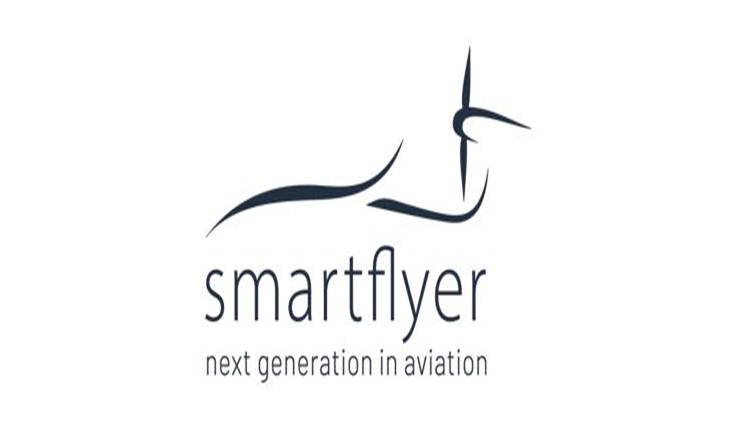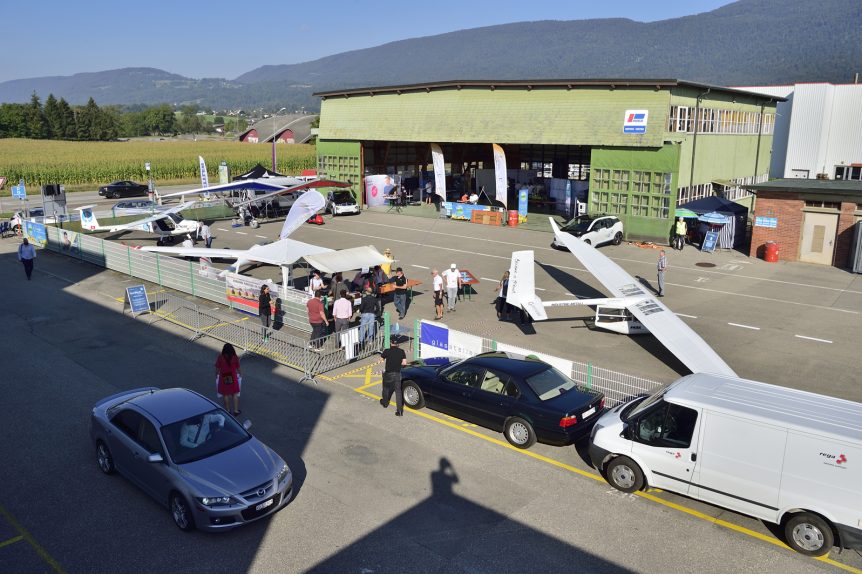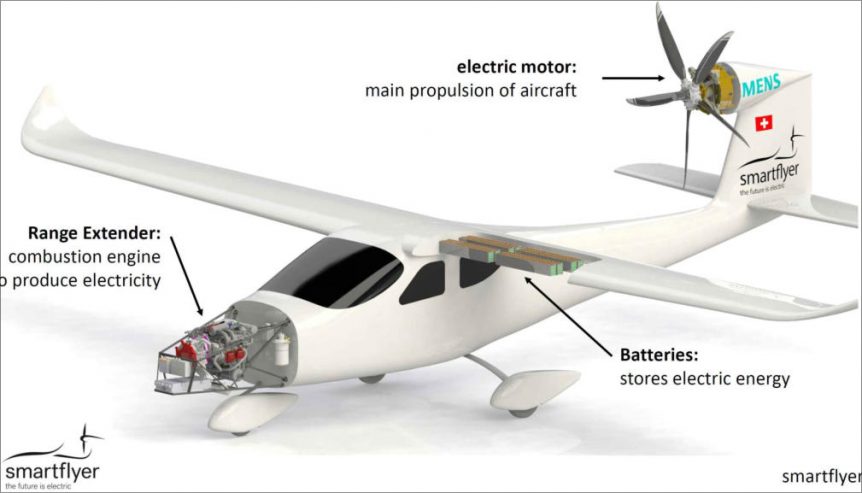Smartflyer is a four-passenger, proof-of-concept light aircraft that can fly on pure electric power, as a hybrid with an av-gas powered generator, or as a hydrogen-fuel-cell-driven airplane. It’s been under development for several years, but is moving production to Stelzach – just nearby. Likewise, the Smartflyer Challenge, an electric aircraft fly-in, is moving from Smartflyer’s Grenchen, Switzerland home to Bern, a much larger field about 20 miles south. The Smartflyer SFX1 Electric-Flight.eu reports, “The fuselage of the Smartflyer SFX1 is slowly taking shape.” Company founder Rolf Stuber OK’d production of the first carbon fiber reinforced plastic (CFRP) fuselage at Aerolite near Lucerne. In a rented hall of 500 square meters (5,382 square feet), the “ready-to-install” drivetrain, consisting of a well-tested Rotax 914 engine coupled to a YASA generator, workers will assemble the major components. The SFX1, due to fly next year, has the following specifications: Cruise Speed: 120 knots / 222 km/h (138 mph) Take off Power: 160 kilowatts (214.5 …
Electrifly-in: Grenchen 2021
Electrifly-in, formerly the Smartflyer Challenge, is on for September 11 and 12, 2021, in Grenchen, Switzerland. The event, even held in 2020 despite the pandemic, is a compact showing of the latest in electrical aircraft and technology. Watch as this 2019 video as a Φnix (the Greek letter phi + nix –a clever bilingual pun) takes off, circuits the area and makes a landing – all the time flying with other electric aircraft. In this flight, you can see the compact airport (including a grass landing strip) and a lovely setting for a great event. Started as the Smartflyer Challenge* in 2016, the gathering has changed its name to be more inclusive. Last year, even with travel limitations imposed worldwide, saw a healthy turnout of all-electric flyers, ranging from ultralight electric “trikes” to cross-country tourers. From 12 to 50 Kilowatts and Beyond Powering a large number of machines on last year’s flight line, Eck-Geiger Engineering makes a range of motors …
SmartFlyer is Looking Smart
Only a design concept just a few years ago, the SmartFlyer hybrid aircraft is swiftly approaching full-fledged reality. CEO Rolf Stuber started the project and has been joined by Daniel Wenger, who shares design honors with him; and eleven others with a dazzling array of skills and degrees. Every member of the team has built, flies or has flown in everything from gliders to “heavy” airliners. The team’s goal is to craft a “proof of concept” airplane which will fly by 2021. Facebook Updates Recent Facebook photographs show a nose section with a Rotax 914 engine driving a special generator, yards of orange cable connecting the big pieces, and a set of formers for what will probably be the fuselage mold. smartflyer-challenge, 2nd edition this weekend visit the second fly-in for electric aircraft this weekend in Grenchen, Switzerland. The smartflyer team will be there. More info on https://www.smartflyer-challenge.com/ Posted by Smartflyer-aircraft on Monday, August 27, 2018 Pilots and passengers will …
SmartFlyer – an Electric Four-Seater?
The people behind the Smartflyer, a Swiss design concept now under development ask, “Why does the Smartflyer look like this? With a tail-mounted electric motor, it’s a bit reminiscent of e-Genius, and also a bit like a strutless Rutan Skigull. In fact, the basic configuration has been used on many significant aircraft over the last several decades, as a segment of Smartflyer’s web site shows. As Herr Professor Dipl-Ing. Rudolf Voit-Nitschmann, Project Leader on e-Genius explained, several benefits accrue from this arrangement of aerodynamic elements. Compared to a conventional touring motor glider a substantial larger propeller-diameter can be realized without a high and consequentially heavier undercarriage. Therefore the propeller-efficiency will increase. The front body part has the aerodynamic quality of a modern glider (no vorticities and local impact pressure peaks) and thus a very small drag. The propeller is optimally protected from ground contact. Electric motors are light enough to mount on a tail and are therefore able to benefit from that placement while …



